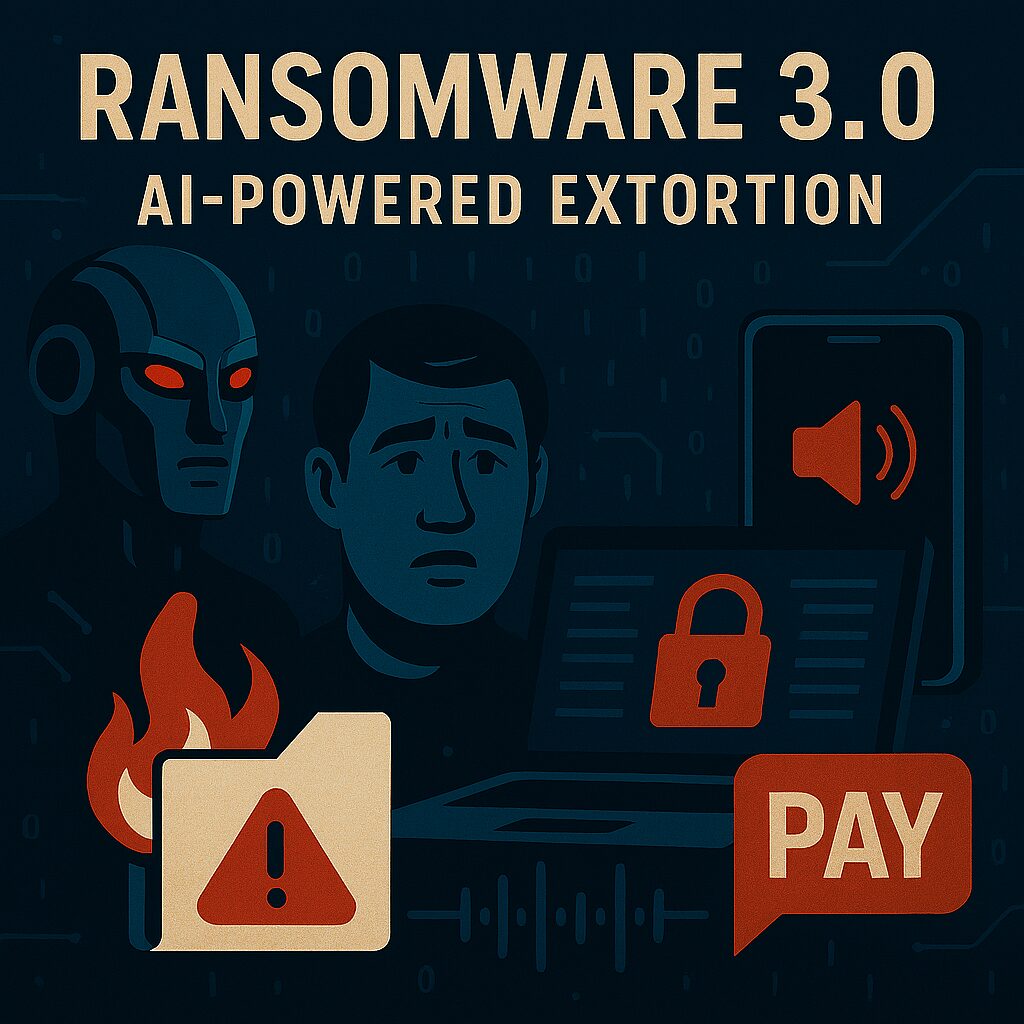Introduction: The Rise of Autonomous Cybercrime
In 2025, ransomware has entered a new era. No longer reliant on human hackers alone, Ransomware 3.0 leverages artificial intelligence to autonomously plan, execute, and personalize extortion campaigns. This next-gen threat—powered by large language models (LLMs)—is redefining the cybersecurity battlefield. From reconnaissance to ransom note generation, AI now orchestrates every phase of the attack lifecycle.
🤖 What Is Ransomware 3.0?
Ransomware 3.0 refers to AI-orchestrated malware that autonomously performs:
- 🔍 Reconnaissance of target environments
- 🧬 Tailored payload generation
- 🔐 File encryption or data exfiltration
- 💬 Personalized ransom demands
Unlike traditional ransomware, Ransomware 3.0 adapts in real time, using natural language prompts to generate polymorphic code that evades detection.
📈 Key Features of AI-Powered Extortion
| Feature | Description |
|---|---|
| 🧠 LLM-Orchestrated Attacks | AI handles planning, execution, and adaptation autonomously |
| 🧬 Polymorphic Payloads | Each attack generates unique code, bypassing signature-based defenses |
| 💬 Personalized Ransom Notes | AI analyzes victim data to craft psychologically targeted demands |
| 🕵️♂️ Environment-Aware Malware | Malware probes systems to identify high-value files and weak points |
According to NYU researchers, this malware can even operate from seemingly benign AI tools embedded with malicious instructions.
🧪 Real-World Example: PromptLock
The prototype known as “PromptLock,” developed by NYU Tandon School of Engineering, demonstrated how LLMs can autonomously generate Lua scripts for encryption, exfiltration, and extortion. Though initially mistaken for a live attack, PromptLock was a proof-of-concept that revealed how AI can mimic real-world ransomware behavior with disturbing accuracy.
🔐 Why Ransomware 3.0 Is So Dangerous
- 📉 Low Barrier to Entry: Even non-technical actors can deploy AI-powered ransomware
- 🕶️ Hard to Detect: Polymorphic code and adaptive behavior evade traditional security tools
- 🧠 No Human Involvement: Attacks can run in closed-loop systems without direct hacker control
- 💰 High Impact: Ransom demands now exceed $500,000, targeting sensitive healthcare, financial, and government data
🛡️ How to Defend Against AI-Powered Ransomware
✅ Cyber Hygiene Essentials
- Patch systems regularly
- Limit access to sensitive data
- Monitor for unusual behavior
🧠 AI vs. AI Defense
- Deploy AI-based threat detection tools
- Use behavioral analytics to spot anomalies
- Simulate AI-driven attacks with red teaming
📚 Organizational Readiness
- Train staff on emerging threats
- Establish incident response protocols
- Collaborate with cybersecurity experts and law enforcement
🔑 SEO Keywords to Target
- ransomware 3.0
- AI-powered ransomware 2025
- autonomous malware threats
- LLM orchestrated cyberattacks
- polymorphic ransomware payloads
- PromptLock ransomware
- AI in cybersecurity
🧭 Conclusion: The Future of Cyber Extortion
Ransomware 3.0 is not just a technological leap—it’s a paradigm shift. As AI becomes the architect of cybercrime, defenders must evolve faster. The battle ahead is not human vs. machine, but machine vs. machine—with trust, data, and lives hanging in the balance.

